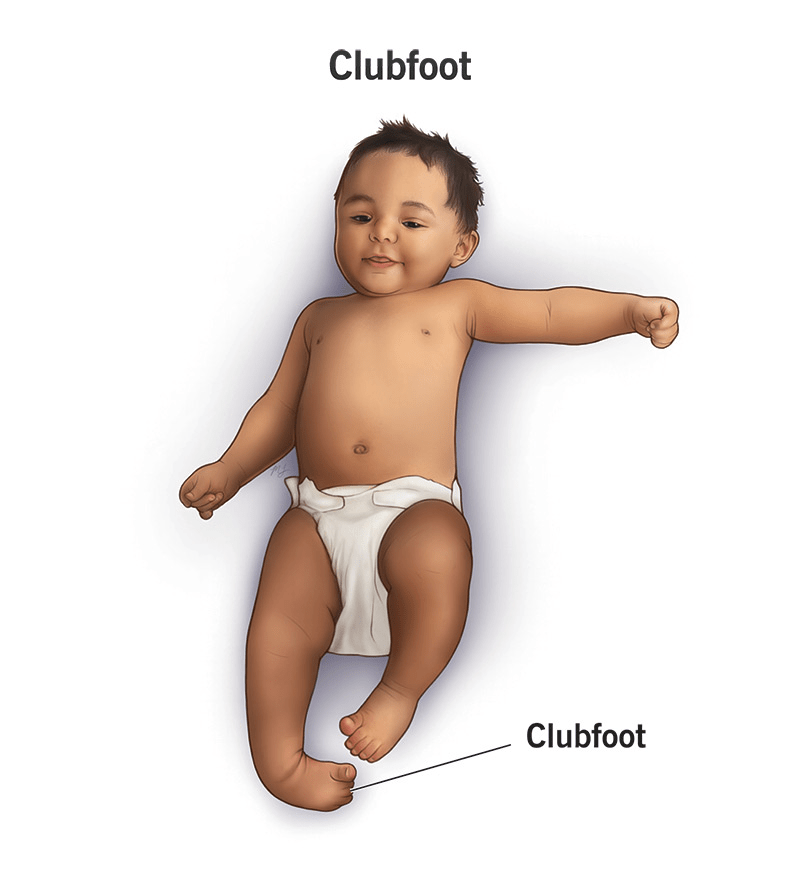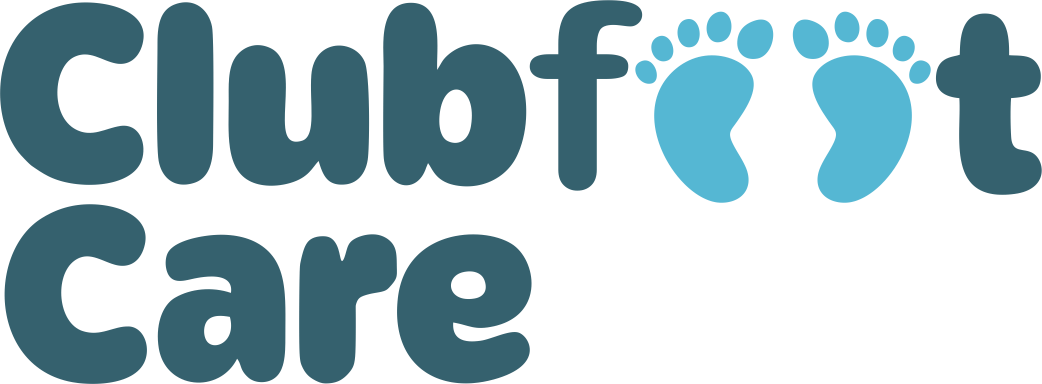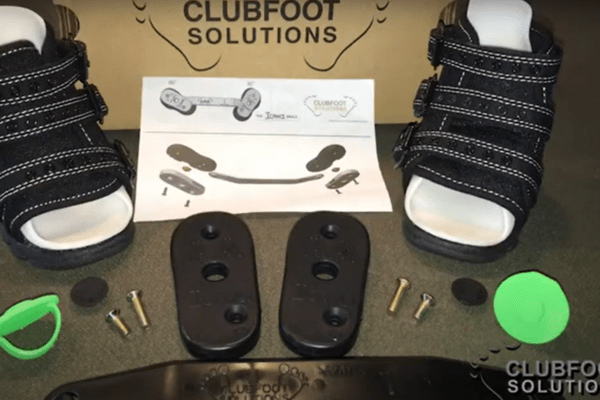Understanding Clubfoot: Causes, Treatments, and Life-Changing Solutions for Affected Families

Clubfoot is a condition that affects countless families around the world, often emerging as a perplexing diagnosis at birth. Understanding clubfoot is crucial, as it impacts not only the physical development of affected individuals but also the emotional well-being of their families. The good news? Advances in treatment options are transforming lives, offering hope and invaluable support to those navigating this journey. In this article, we delve into the root causes of clubfoot, explore the latest treatment methodologies, and shine a light on life-changing solutions that empower families. Whether you’re a parent facing an unexpected diagnosis or simply curious about this common condition, our in-depth examination aims to provide clarity and reassurance. Join us as we uncover the science behind clubfoot and celebrate the strides being made in care and support for those impacted. Your understanding begins here!
Clubfoot, medically termed talipes equinovarus, is a congenital deformity that affects the foot and ankle. It occurs when a baby’s foot is twisted out of shape or position, making it appear as though the foot is turned inward and downward. This anomaly can affect one or both feet and is one of the most common congenital orthopedic conditions. Clubfoot’s prevalence stands at approximately 1 in every 1,000 live births, making it a significant concern for many families worldwide.
The impact of clubfoot is not limited to the physical deformity alone. It can pose challenges in mobility, contribute to discomfort, and if left untreated, lead to lifelong disability. However, with early diagnosis and appropriate treatment, the prognosis for children with clubfoot is generally very good. Understanding the condition fully is the first step towards managing it effectively, and this article aims to provide comprehensive information on the causes, treatments, and support systems available for families affected by clubfoot.
The Causes of Clubfoot
The exact cause of clubfoot remains unknown, but research suggests that it results from a combination of genetic and environmental factors. One of the primary considerations is genetic predisposition; children with a family history of clubfoot are at a higher risk of developing the condition. Studies indicate that if a parent had clubfoot, the likelihood of their children being born with the same condition increases significantly.
Environmental factors also play a role in the development of clubfoot. These can include conditions in the womb, such as oligohydramnios (low amniotic fluid), where the lack of space restricts the fetus’s movement, potentially leading to deformities. Other factors like maternal health, including smoking and other lifestyle habits during pregnancy, have been linked to an increased risk of clubfoot. However, these associations are complex and not entirely understood.
There is also evidence to suggest that certain neurological conditions and syndromes can lead to the development of clubfoot. These include spina bifida and other neuromuscular disorders where the nerves and muscles do not function properly, affecting the positioning of the feet. Understanding these potential causes is crucial as it helps in the early identification and tailored treatment of the condition.
Diagnosing Clubfoot: Early Detection and Importance
Early detection of clubfoot is essential for effective management and treatment. The condition is often diagnosed at birth through a physical examination by a healthcare professional. The characteristic appearance of the foot, with the heel pointing downward and the forefoot turning inward, is usually sufficient for diagnosis. In some cases, clubfoot can be detected during prenatal ultrasounds, especially in the second trimester, allowing parents to prepare for the necessary treatments post-birth.
Beyond the physical examination, doctors may use imaging studies, such as X-rays, to assess the severity of the deformity and plan the appropriate course of treatment. These imaging techniques provide a detailed view of the bone structure, which helps in understanding the extent of the condition and monitoring progress during treatment. Early diagnosis through these methods is vital as it allows for the initiation of treatment soon after birth, which is critical for effective correction.
The importance of early detection cannot be overstated. Immediate treatment can prevent complications and improve the chances of normal foot function. It also alleviates the emotional and psychological burdens on families by providing a clear path for intervention and recovery. Early intervention is key to ensuring that children with clubfoot can lead active and fulfilling lives.
Treatment Options for Clubfoot
There are several treatment options available for clubfoot, each tailored to the severity of the condition and the individual needs of the patient. The primary goal of treatment is to correct the deformity, ensuring that the child can walk, run, and participate in normal activities without pain or difficulty. Non-surgical methods are generally preferred, especially for less severe cases, as they are less invasive and have a high success rate.
One of the most widely used non-surgical treatments is the Ponseti method, which involves gentle manipulation of the foot followed by the application of casts to gradually correct the deformity. This method is highly effective and is the standard of care for most cases of clubfoot. The process typically begins shortly after birth and continues for several weeks, with regular adjustments to the casts to ensure proper alignment.
In some cases, especially when the clubfoot is more severe or non-responsive to non-surgical methods, surgical intervention may be necessary. Surgery aims to release tight tendons and ligaments and correct the bone structure to achieve a normal foot position. While surgery can provide excellent results, it is usually considered a last resort due to the associated risks and longer recovery time. The choice of treatment is determined by a team of specialists who evaluate the best approach for each individual case.
The Ponseti Method: A Leading Treatment Approach
The Ponseti method, developed by Dr. Ignacio Ponseti, is one of the most effective and widely used treatments for clubfoot. This method emphasizes gradual, gentle correction of the foot deformity through a series of manipulations and castings. The treatment begins shortly after birth, ideally within the first few weeks, leveraging the malleability of the infant’s bones and tissues for better results.
The process involves weekly sessions where the foot is gently stretched and manipulated into a more correct position, followed by the application of a plaster cast to hold the foot in place. Each week, the cast is removed, and the process is repeated with slight adjustments to further correct the foot’s alignment. Typically, this casting process takes about 6 to 8 weeks, after which most of the deformity is corrected.
After the casting phase, a minor surgical procedure called a tenotomy may be performed to release the Achilles tendon, which is often tight and contributes to the deformity. Following the tenotomy, the foot is placed in a final cast for a few weeks to allow for proper healing. Once the final cast is removed, the child is fitted with a foot brace, which must be worn full-time for the first few months and then at night for several years to prevent relapse. The Ponseti method has a high success rate and is considered the gold standard for clubfoot treatment.
Surgical Interventions for Severe Cases
While non-surgical methods like the Ponseti method are preferred for treating clubfoot, there are instances where surgery becomes necessary. Surgical intervention is typically reserved for severe cases or when non-surgical treatments have failed to achieve the desired results. The goal of surgery is to correct the alignment of the bones, tendons, and ligaments to achieve a functional and pain-free foot.
Surgical procedures for clubfoot can vary in complexity, ranging from minimally invasive techniques to more extensive reconstructive surgeries. A common surgical procedure is posterior medial release, where the surgeon releases and lengthens the tight tendons and ligaments in the foot to improve its alignment. This procedure allows the foot to be placed in a more natural position and is often performed when the child is between 6 to 12 months old.
In more severe or complex cases, a comprehensive surgery known as a complete subtalar release may be required. This involves extensive reconstruction of the foot’s soft tissues and bones to achieve proper alignment. The surgery is followed by a period of immobilization in a cast to ensure proper healing. Post-surgical rehabilitation is crucial and includes physical therapy to restore strength and flexibility to the foot. While surgery can be effective, it carries risks such as infection, stiffness, and the potential need for additional surgeries in the future.
The Role of Physical Therapy in Recovery
Physical therapy plays a vital role in the recovery and rehabilitation of children with clubfoot, regardless of whether they undergo non-surgical or surgical treatment. The primary goal of physical therapy is to improve the strength, flexibility, and function of the affected foot, enabling the child to achieve normal mobility and activity levels.
During the initial phases of treatment, physical therapy focuses on gentle stretching exercises to maintain the corrected position of the foot and prevent relapse. The therapist works closely with the child and family, providing guidance on exercises that can be performed at home to support the treatment process. These exercises help to strengthen the muscles around the foot and ankle, promoting better stability and movement.
As the child grows and progresses in their recovery, physical therapy becomes more comprehensive, incorporating activities that enhance balance, coordination, and overall motor skills. Therapists may use play-based exercises to engage the child and make the sessions enjoyable, fostering a positive attitude towards therapy. Consistent participation in physical therapy is essential for achieving the best possible outcomes and ensuring that the child can lead an active and fulfilling life.
Supporting Families: Resources and Community Support
Navigating the journey of clubfoot care treatment can be challenging for families, both emotionally and practically. Access to resources and community support is crucial in helping families cope with the diagnosis and treatment process. Numerous organizations and support groups are dedicated to providing information, guidance, and emotional support to families affected by clubfoot.
One of the key resources for families is the Global Clubfoot Initiative (GCI), an organization that works to improve the treatment and care of children with clubfoot worldwide. GCI provides educational materials, training programs, and advocacy efforts to raise awareness about clubfoot and ensure that families have access to the best possible care. Additionally, local hospitals and clinics often have support groups where families can connect with others who are going through similar experiences, offering a sense of community and shared understanding.
Online forums and social media groups also serve as valuable platforms for families to share their stories, ask questions, and receive support from others. These communities provide a space for parents to discuss their concerns, celebrate milestones, and gain insights from those who have already navigated the clubfoot journey. Emotional support from other families can be incredibly empowering, helping parents feel less isolated and more confident in managing their child’s condition.
Long-Term Outcomes for Children with Clubfoot
The long-term outcomes for children with clubfoot are generally very positive, especially when the condition is diagnosed and treated early. With appropriate treatment, most children can achieve normal foot function and lead active, healthy lives. The success of treatment depends on several factors, including the severity of the deformity, the timing of intervention, and the consistency of follow-up care.
Children who undergo the Ponseti method or other non-surgical treatments typically experience excellent long-term outcomes. The majority of these children can walk, run, and participate in sports without pain or limitations. Regular follow-up visits with healthcare providers are essential to monitor the foot’s development and address any potential issues promptly. Adherence to post-treatment protocols, such as bracing, is also crucial in preventing relapse and maintaining the corrected position of the foot.
For children who require surgical intervention, the long-term outcomes are also generally positive, although they may face additional challenges during recovery. Physical therapy and rehabilitation play a significant role in ensuring the best possible results. While some children may experience minor differences in foot strength or flexibility, these variations typically do not impede their ability to engage in normal activities. Overall, with early and appropriate treatment, children with clubfoot can look forward to a bright and active future.
Conclusion: Empowering Families and Raising Awareness
Understanding clubfoot and its implications is the first step towards effective management and treatment. By gaining knowledge about the causes, diagnosis, and treatment options, families can make informed decisions and take proactive steps to support their child’s journey to recovery. Advances in medical treatments, such as the Ponseti method, have revolutionized the care of clubfoot, offering hope and improved outcomes for countless children worldwide.
Support from healthcare professionals, community organizations, and other families is invaluable in navigating the challenges posed by clubfoot. Access to resources and a strong support network can empower families, providing them with the tools and encouragement needed to ensure their child’s success. Raising awareness about clubfoot is also essential in promoting early detection and intervention, ultimately leading to better outcomes for affected children.
As we continue to make strides in the treatment and support of children with clubfoot, it is crucial to celebrate the progress made and acknowledge the resilience of affected families. By fostering a community of understanding and compassion, we can ensure that every child with clubfoot has the opportunity to thrive and lead a fulfilling life. Your journey towards understanding and supporting those impacted by clubfoot begins here, with the knowledge that you are not alone and that there is hope and help available.

